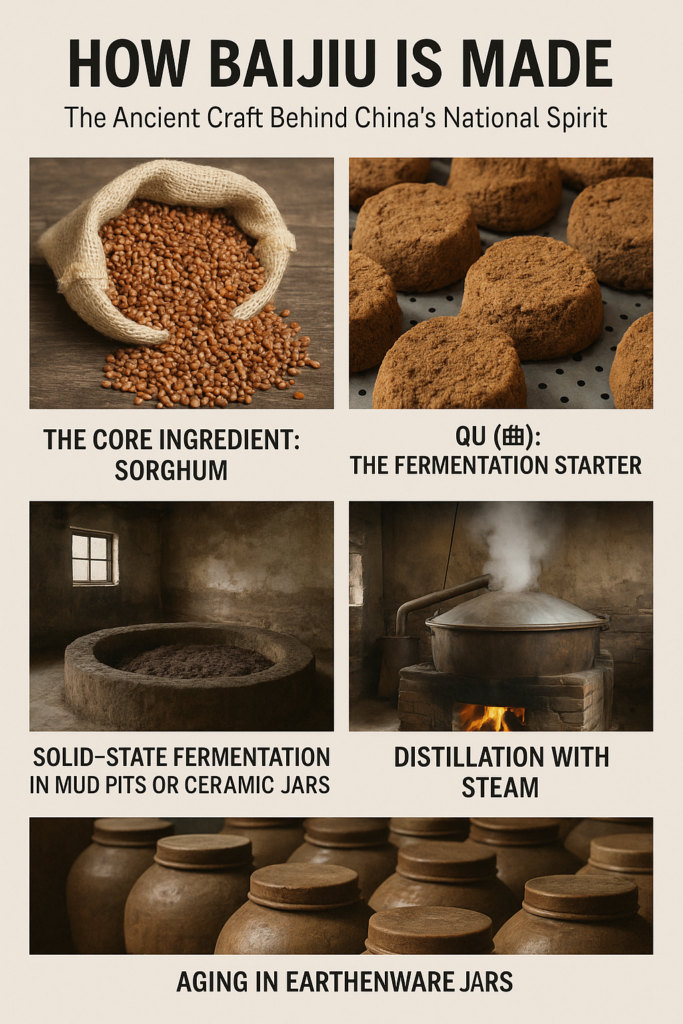Baijiu (白酒), often dubbed “white liquor,” is China’s most consumed spirit—and one of the oldest distilled beverages in the world. With a history stretching back over a thousand years, its production process is steeped in tradition, rich in complexity, and unlike any other spirit on the planet. Here’s a closer look at how baijiu is made.

1. The Core Ingredient: Sorghum
Baijiu is most commonly made from sorghum, a hardy grain known for its bold flavor. Other grains like rice, wheat, or corn may also be blended in, depending on the baijiu style and regional tradition.
2. Qu (曲): The Fermentation Starter
At the heart of baijiu’s uniqueness is qu, a fermentation starter similar to koji in sake brewing. Made from wheat or barley and rich in wild yeasts, molds, and bacteria, qu breaks down the starches in grains into fermentable sugars—but it also imparts much of baijiu’s signature aroma and complexity.
There are three main types of qu:
• Daqu (large qu) – used in strong and sauce-aroma baijiu
• Xiaoqu (small qu) – used in light-aroma and rice-aroma styles
• Fuqü (complex qu) – used in some modern or blended baijius
3. Solid-State Fermentation in Mud Pits or Ceramic Jars
Unlike whisky or vodka, baijiu undergoes solid-state fermentation, meaning the grain mash is fermented without free-flowing water.
For strong aroma baijiu, the grain mixture is packed into mud pits and covered for several months, sometimes up to a year. The pits are never cleaned—aged microbes make each distillery’s flavor profile unique.
In contrast, light aroma baijiu is often fermented in ceramic jars, which yield cleaner, more delicate flavors.
4. Distillation with Steam
Once fermentation is complete, the grain mash is loaded into a steamer. Unlike copper pot stills used in whisky production, baijiu is distilled using steam, which passes through the fermented grains to extract alcohol and aroma compounds.
This process is often repeated multiple times to extract different “cuts” of the spirit.
5. Aging in Earthenware Jars
Freshly distilled baijiu is potent and raw. To mellow and develop deeper flavors, it is aged in porous clay jars that allow micro-oxidation. This stage can last months to several years, depending on the desired flavor and style.
6. Blending and Bottling
Master distillers carefully blend different batches to achieve a consistent and balanced profile. This stage is where the artistry of baijiu truly shines. After blending, the baijiu is bottled and sealed, ready to be enjoyed in celebrations, banquets, or quiet contemplation.
Final Thoughts
The process of making baijiu is labor-intensive, time-honored, and highly regional. Every bottle reflects a specific terroir, climate, microbial environment, and cultural heritage. It’s more than just a spirit—it’s an ancient craft, a cultural expression, and a bold experience for the adventurous palate.
Curious to try? Start with a guided tasting or a baijiu masterclass—your palate might just discover a new favorite tradition.
